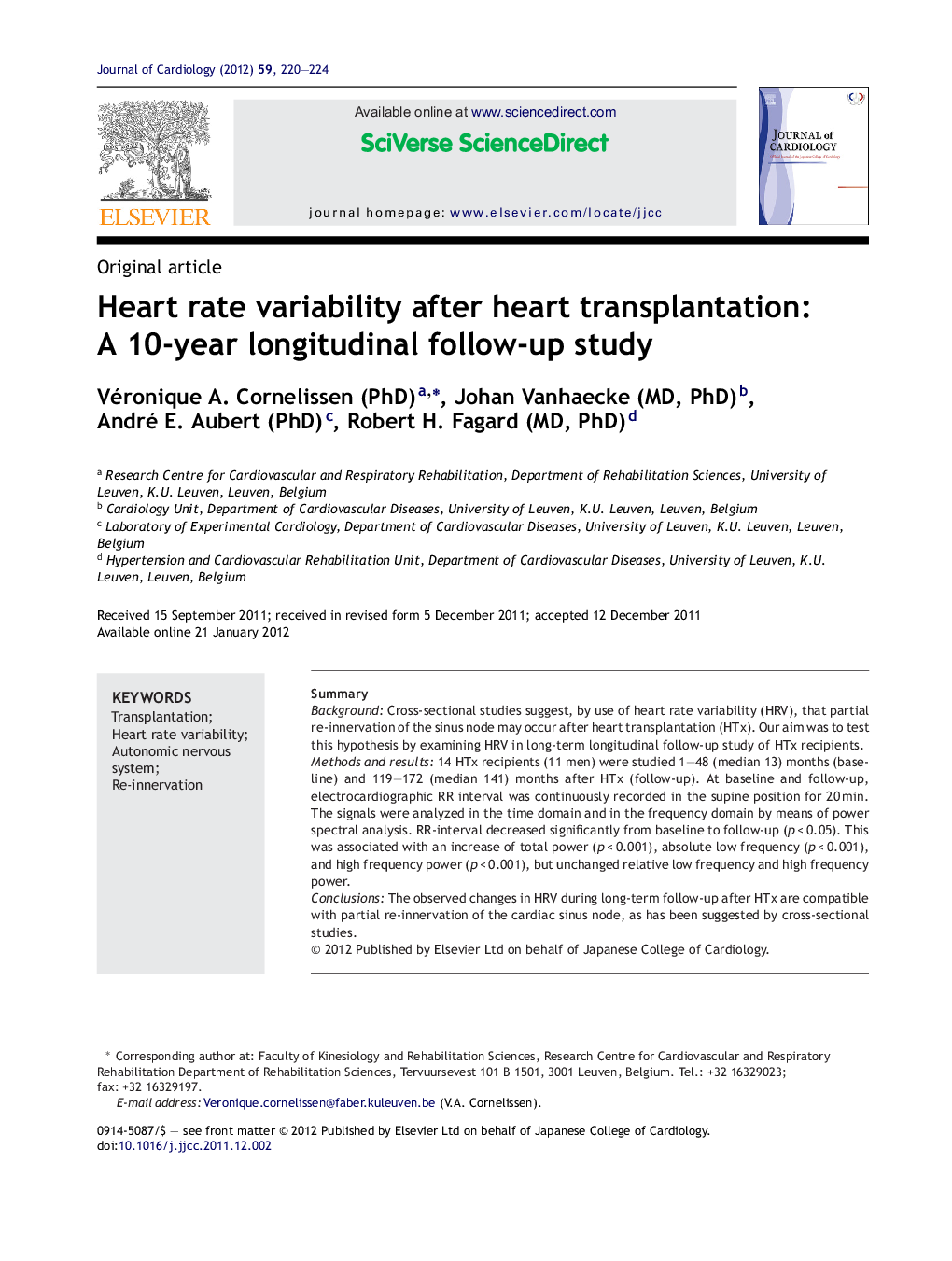| Article ID | Journal | Published Year | Pages | File Type |
|---|---|---|---|---|
| 2963246 | Journal of Cardiology | 2012 | 5 Pages |
SummaryBackgroundCross-sectional studies suggest, by use of heart rate variability (HRV), that partial re-innervation of the sinus node may occur after heart transplantation (HTx). Our aim was to test this hypothesis by examining HRV in long-term longitudinal follow-up study of HTx recipients.Methods and results14 HTx recipients (11 men) were studied 1–48 (median 13) months (baseline) and 119–172 (median 141) months after HTx (follow-up). At baseline and follow-up, electrocardiographic RR interval was continuously recorded in the supine position for 20 min. The signals were analyzed in the time domain and in the frequency domain by means of power spectral analysis. RR-interval decreased significantly from baseline to follow-up (p < 0.05). This was associated with an increase of total power (p < 0.001), absolute low frequency (p < 0.001), and high frequency power (p < 0.001), but unchanged relative low frequency and high frequency power.ConclusionsThe observed changes in HRV during long-term follow-up after HTx are compatible with partial re-innervation of the cardiac sinus node, as has been suggested by cross-sectional studies.
